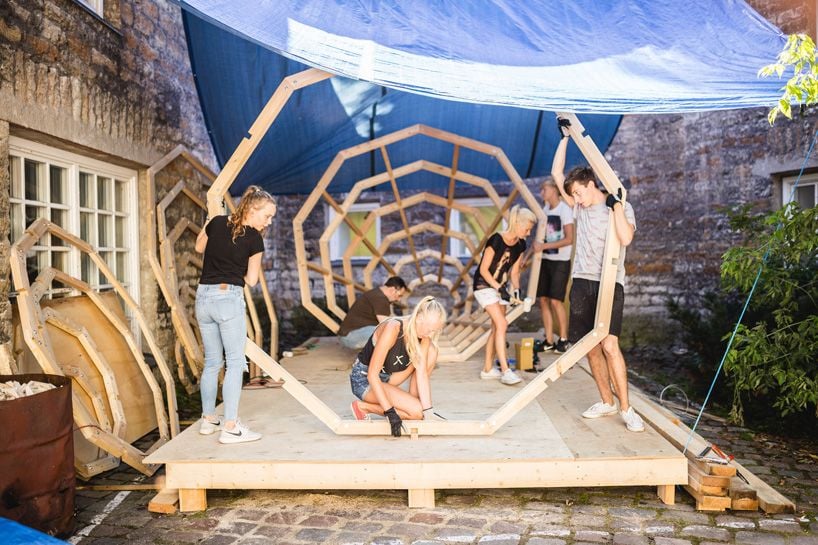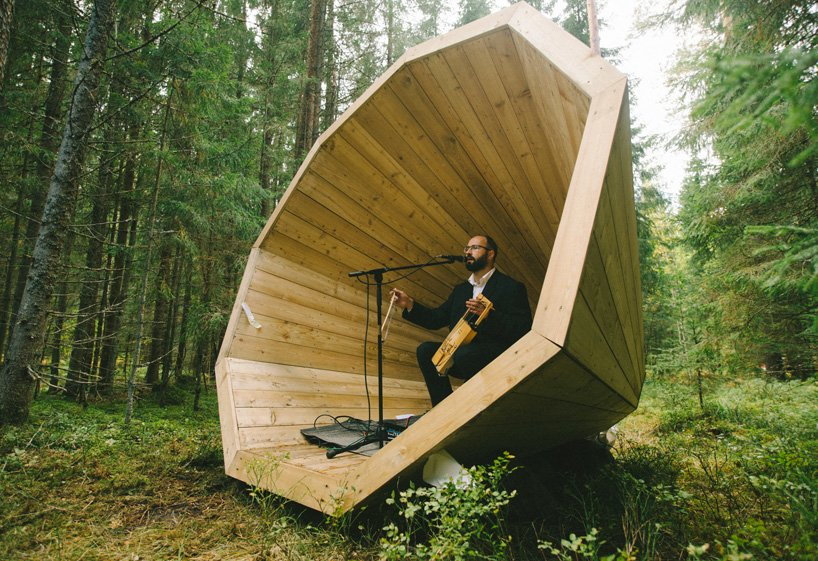Nature’s Volume is Amplified With Megaphones in This Estonian Forest
Everything seems bigger in nature, whether it’s the trees, the waterways, or even the sounds. With the idea of amplifying the natural vibrations of a forest in mind, a group of architecture students built and placed three massive megaphones in the Estonian wilderness to create an experience open to anyone willing to make the journey.

Located about three hours from the capital, near the RMK Pähni Nature Center in Varstu Parish, Estonia, the handmade wooden megaphones sit among the fir trees, surrounded by nothing but the sounds of chirping birds and rustling leaves.
The project is the brainchild of architecture students from the Estonian Academy of Arts. The group built and installed the megaphones — individually called RUUP — in conjunction with an acoustics engineer consultant back in 2015. The goal was to experiment with surround-sound amplification inside an unlikely location, the outside. More specifically, Estonia’s Võru county forest.

Estonia’s forests cover nearly half of its total area, and all of them are available to residents and visitors for recreational activities year-round. As you can imagine, finding a remote location away from the noise pollution of cities was not difficult here. Even with the off-the-beaten path placement, the installation manages to attract hikers, musicians, and solitude seekers, each looking for their own experience.


Hannes Praks, course advisor and Head of the Interior Architecture Department at the Estonian Academy of Arts, shared his perspective on the project’s remote location, stating: “the farther we get from the intense vibration of the capital, the better we are able to sense the low-frequency vibration of nature. This is why the installation would be missing its essence if it were to be located next to Tallinn. In the megaphones, a certain surround sound effect, communicated by the megaphones when the distance and angle is just right, is worth testing.”
The massive structures measure three meters in diameter, with each one sitting six meters from the center of a large circle. With the help of a map from the somewhat nearby visitor’s center, artists and nature enthusiasts can visit for a moment, an afternoon, or even camp out overnight. Musicians have flocked to the area to experience the sound of music played from inside a RUUF, hosting small-scale cultural events and concerts. Others visit simply to view the architectural design, or to delve deep into meditation within the natural setting.


Each handbuilt megaphone allows visitors to peer through either the large opening or the smaller frame on the other end. Although the initial goal may have been to create a surround sound of nature’s music, the display also seems to have opened the possibilities for other ways to experience the space. Exploring the structures from the front, back, and center of the circle all yield different amplification experiences, but some debate whether they really amplify the sounds at all, inviting visitors to also step outside the RUUF to contemplate the difference in sound. In this way, the attraction also draws visitors into nature, putting the spotlight on what the forest has to offer, both as a sensory experience and as an opportunity to be introspective. Some might even say the project allows you to listen to your own thoughts more than the sounds of the world around you.




